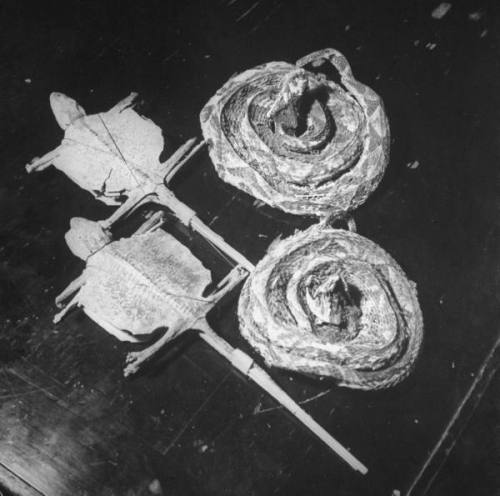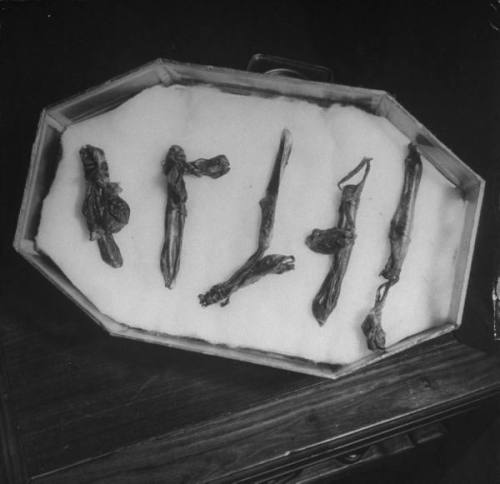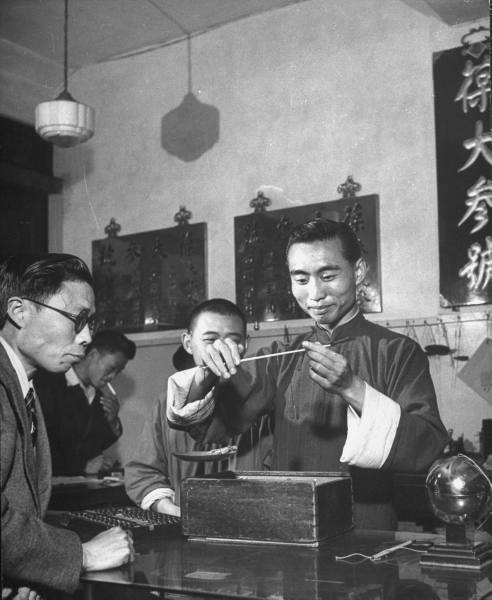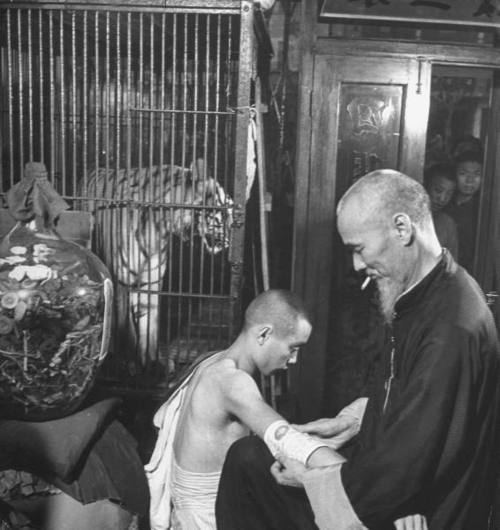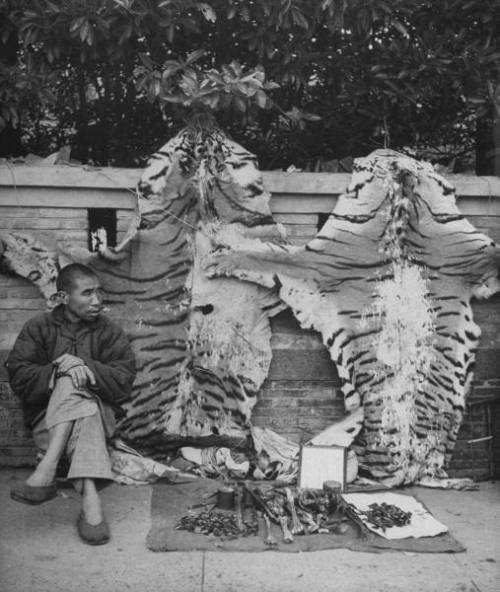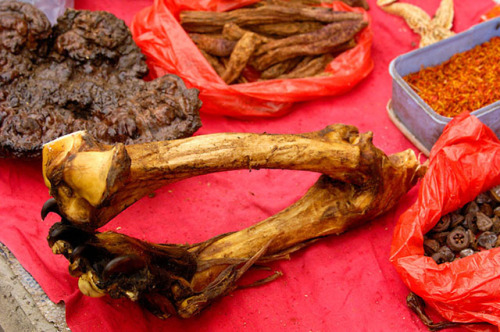#animals in medicine
George Silk: Shanghai Pharmacies, 1946
1. Dry lizard and rattle snake powder used for medical cures
2. Shopping in Shanghais largest pharmacy
3. Dried umbilical cords, supposedly good for general health and fertility
4. Kai Kou-Shao sitting in his pharmacy with some of the stuffed animals he keeps around and also a live duck, all of which have some sort of curative significance
5. Seals kidneys used for medical purposes
6. A clerk at the Pao Dah pharmacy weighing a seal kidney for a customer
7. Horns of a very young stag and a stag foetus, used for Chinese cures; the horns of the stag are made into medication containing hormones and the foetus is symbol of fertility
Post link
George Silk: Tiger Bones series, Shanghai, 1946
1. Dr. Chen Chu, a tiger bone doctor, standing in his pharmacy
2. Dr. Chen Chu feeding a caged tiger a strip of meat
3. Dr. Chen Chu bandaging an arm after applying some tiger bone balm
Post link
George Silk: Street vendor with tiger bones for those who wish to make their own medicine, Shanghai, 1946
Post link
James Whitlow Delano: Young Tibetan man holds tiger paw for sale in Qingping Market, Guangzhou, 2009.
The region’s increase in wealth has driven up demands for illegal tiger parts, which are used in traditional Chinese medicine. The World Wildlife Fund estimates that globally, there could be as few as 3,200 tigers left in the wild. On the day this photo was taken, more than 25 tiger paws were laid out for sale on the sidewalk market at midday.
From James Whitlow Delano’s Growthseries
Post link
Tigers in Traditional Chinese Medicine
For more than 1000 years the use of tiger parts has been included in the traditional Chinese medicine regimen. Because of the tiger’s strength and mythical power, the Chinese culture believes that the tiger has medicinal qualities, which helps treat chronic ailments, cure disease and replenish the body’s essential energy.
Traditionally, most tiger parts were considered to have a healing effect on human beings.
Whiskers for tooth ache
Teeth for rabies, asthma, and sores on penis
Eyeballs for epilepsy and malaria
Biles for convulsions in children
Brain to cure laziness and pimples
Blood for strengthening the constitution and will power
Skin to treat mental illness
Fat for vomiting, dog bites, bleeding, and haemmorrhoids
Tail for various skin diseases
Claws for insomnia
Bone for rheumatism, arthritis, general weakness, headaches, stiffness or paralysis primarily in lower back and legs, and dysentery
Despite scientific proof that tend to discount all claims of any curative power in tiger bones, Chinese medicine stores in Hong Kong, China, Taiwan, South Korea, Vietnam and in Chinatowns across Europe and North America, do a steady trade in tiger wines, powder, tiger balms and tiger pills. Many Asian communities believe that tiger bone, in powdered form or prepared as tiger wine, soothes rheumatic pain and cures ulcers, malaria and burns.
Although the use of tiger bones was removed from the traditional Chinese medicine (TCM) pharmacopeia in 1993, when China first introduced a domestic ban on tiger trade, the increase in the standard of living in southeast Asia has made these remedies available to most people.
It is no wonder then that this newly affluent population has had a great effect on wildlife numbers and the demand for tiger parts. In many places in China, tiger parts are a delicacy that is served at special private banquets. The use of endangered tiger products and their medicines is seen as a symbol of high status and wealth. Some remedies list tiger parts as an ingredient, but the real animal parts are so expensive that often the medicines may have only trace elements; but even this is enough to promote the continued slaughter of the tiger.
Further reading:
On Tiger Balm (which contains no tiger parts) here, on recent sales of tiger bone wine on auction, an 15 years old undercover discovery of sales of tiger parts in American Chinatowns and finally a general introduction to the issue.
Post link

